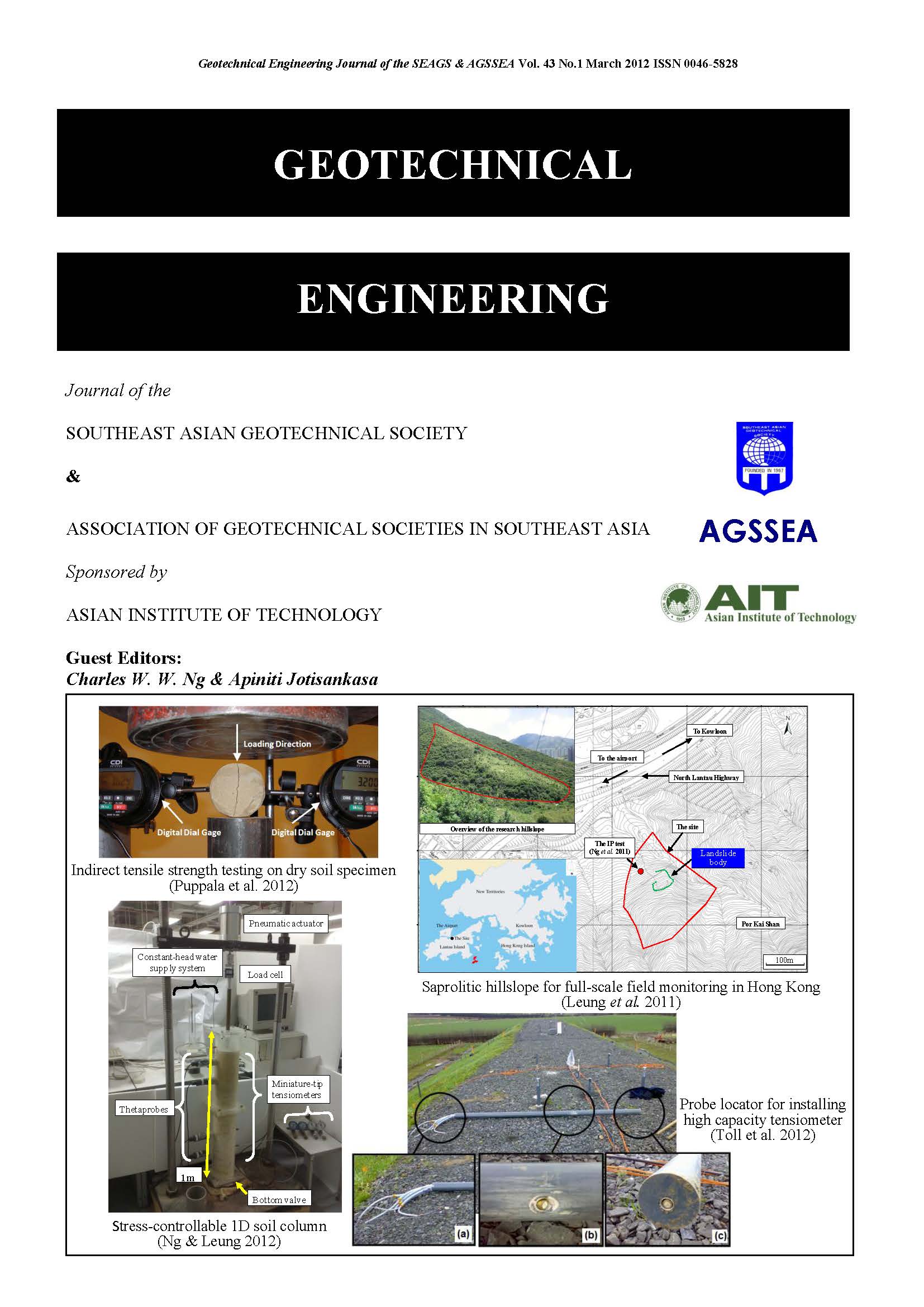Unsaturated Soil Mechanics For Slope Stabilization
Main Article Content
Abstract
Rainfall-induced slope failures commonly occur in the unsaturated zone above groundwater table in many steep residual soil slopes. During a rainy season, desiccated soils with higher permeabilities will increase rain infiltration into slopes causing an increase in pore-water pressures in the zone above the groundwater table. In addition, the groundwater table may rise to result in a further increase in pore-water pressures. As a result, the shear strength of the soil will decrease and factor of safety of the slope can decrease to below a critical value, triggering slope failure. Therefore, it is important to be able to protect unsaturated soil zone within a slope by controlling the
groundwater level and the flux boundary conditions across slope surface as a slope stabilization method. In this paper, the mechanisms for maintaining unsaturated zone in a slope using several slope stabilization methods are described using field examples involving site investigation, numerical analyses and instrumentation. The effectiveness of each slope stabilization method is assessed using principles of
unsaturated soil mechanics.
Article Details

This work is licensed under a Creative Commons Attribution-NonCommercial-NoDerivatives 4.0 International License.
Copyright © 2019 Association of Geotechnical Societies in Southeast Asia (AGSSEA) - Southeast Asian Geotechnical Society (SEAGS).


